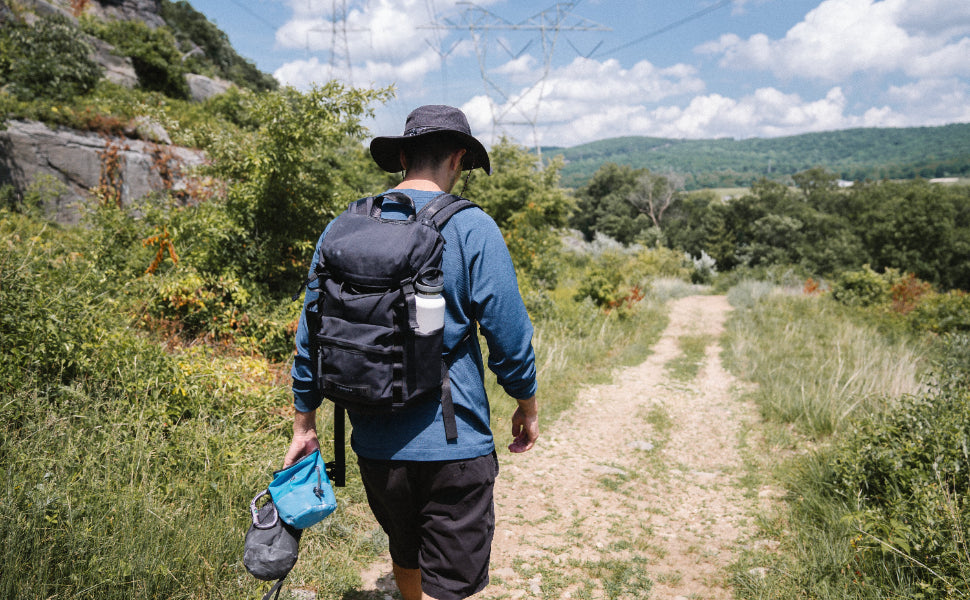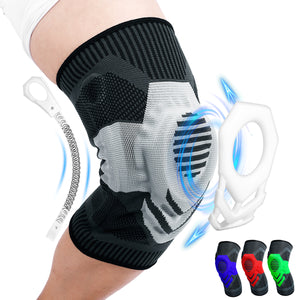A Guide to Spring Hiking

Spring is an amazing season for outdoor excursions, and hiking is simply one of the great things to bear witness to the beauty of this season. Be it a seasoned hiker or just wanting to get some good exercise, there are routes that suit just about anyone this time of year. Below, some pivotal facts and tips are discussed, along with how these will make your hiking experience this season successful and enjoyable.
Choosing the Right Trail
The selection of the right trail is the very basis of any successful and enjoyable spring hike. While one selects trails, the following points must be considered:
-
Difficulty Level: The selection of a trail is done first and foremost according to one's fitness level and experience in hiking. Most trails are ranked as easy, moderate, or difficult. Carefully look at the trail distance, elevation gain, terrain, and technical challenges to make sure it matches your ability.
-
Trail Conditions: Know the trail conditions regarding maintenance, closures, or restrictions. Call local park authorities or check current information from hiking websites. Spring may also include muddy or slippery trails, so dress accordingly.
-
Weather: Check the forecast for the day of your hike. Spring weather is very unpredictable; thus, be prepared for very sudden temperature changes, rain, or even snow on higher points. Adjust accordingly.
-
Time Management: Choose your trail based on how much available time you have. Consider the projected length of time the trail will take, and make sure that fits within your schedule. Think about any extra time you might take for breaks, sightseeing, or exploration.
-
Landscapes and Attractions: Consider the scenery of the trail, including the attractions along or on it. This is the best time to see cascading waterfalls, blooming wildflowers, and generally vibrant landscapes. Take a look at the highlights of the trail and select one that meets your preferences.
-
Alone or with Group: Inform yourself whether you are alone in this hiking or joined by more companions. Some trails could not be good for solitary hiking but could provide enough fun for group hiking. Of course, check if there are any safety guidelines or rules for group hiking.
Always let someone know where you are going and how long you plan to be gone. This includes which trail you are taking and approximately when you expect to return. In this manner someone will know where to look if something were to happen. Hiking is fun!
Essential Gear for Spring Hiking
Perhaps one of the most important parts of a safe and fun spring hike is the gear you pack with you. Here are a few things you may want to toss in the backpack:
-
Proper Footwear: A good, sturdy pair of hiking boots or trail shoes with ankle support and good traction is essential. Break them in well beforehand to prevent blistering during your trip.
-
Layered Clothing: Spring weather can be quite unpredictable; hence, the need to wear your clothes in layers to tackle the rise and fall in temperatures. Have a moisture-wicking base layer, an insulating mid-layer, and a waterproof, breathable outer shell.
-
Backpack and Essentials: Employ a comfortable backpack with enough volume capacity to house your gear. The essentials are a map, compass, headlamp, extra batteries, sunscreen, insect repellent, sunglasses, whistle, and multitool.
-
Navigation Tools and Maps: It is important that beforehand you study the trail and take a map or guidebook that has detail with you. Take a GPS device along, or carry a smartphone that carries offline maps on it.
-
First Aid Kit: Bring a first-aid kit that would attend to accidents or injuries with bandages, adhesive tapes, antiseptic wipes, pain relievers, blister treatments, and other personal medications one may need.
Note that these are the basic things one will need; the amount of gear can be adjusted based on the conditions for which the trail calls and the conditions a hiker may face on their route. Always check the weather forecast and trail conditions before heading out and adjust your gear accordingly.
Safety Tips for Spring Hiking
Spring hiking is one of the best ways to get outdoors, but you need to consider proper safety in order to find the experience enjoyable as well as safe. Here's a rundown of spring hiking safety tips:
-
Stay Hydrated: Spring hiking is notorious for its dehydration factor, so hydrate yourself while out on a hike. Bring enough water to last the entire hike, and bring a water filter or purification tablets to refill along the way.
-
Wear Knee Braces: For persons who have problems with the knees or need a little more support, put on . These prevent excessive pressure on your joints and give additional stability to the joint. Use one that fits the shape and size of your knee, and put it on properly.
-
Carry Extra Food: Bring more food than you think you will need in case your hike takes longer than expected. Include some quick-energy snacks such as nuts, trail mix, or energy bars.
-
Sun Protection: By the time spring arrives, the sun may suddenly be so strong that there is no longer a minimal risk of sunburn. Apply sunscreen at the start of your hike. Protect yourself from the sun with sunglasses and a hat too.
-
Be Cautious of Wildlife and Insects: Many animals during this time of year may be coming out of hibernation, so be aware of the possibility of viewing wildlife. Stay on trails, carry bear spray if desired, and make noise while traveling so you do not startle any wildlife. Also be aware of ticks and other insects that may be present during spring months.
-
Follow Leave No Trace Principles: Leave no trace by following the environmental ethics of leaving behind no or minimal traces of your visit. This involves carrying out all the garbage, camping at established campsites, and not damaging plants or wildlife.
-
Hike with a Buddy: Hike with others whenever possible. Hiking with companions adds an extra layer of safety and support.
-
Inform Someone of Your Plans: A very good idea is letting someone in town know about your hiking plans, which include the route you plan to take and how long you are going to be gone. If there is an unfortunate occurrence that makes you not return as planned, this information will be of great importance for the search and rescue teams.
-
Follow Trail Etiquette: Yield to other hikers on the path, keep noise levels down, respect wildlife and their habitats, and never cut switchbacks. Additionally, follow trail designations and avoid taking shortcuts.
By following these safety precautions, you'll ensure a successful and enjoyable spring hiking adventure.
Reference













